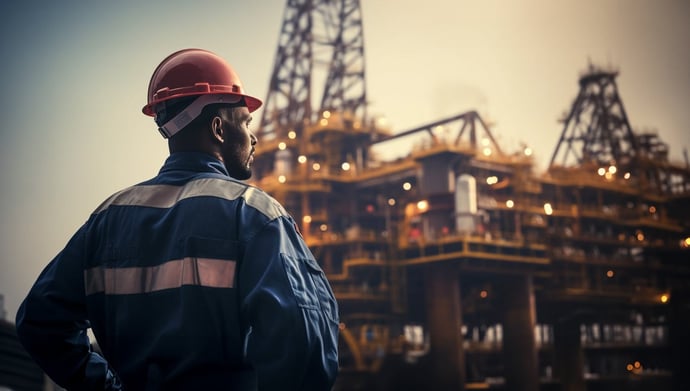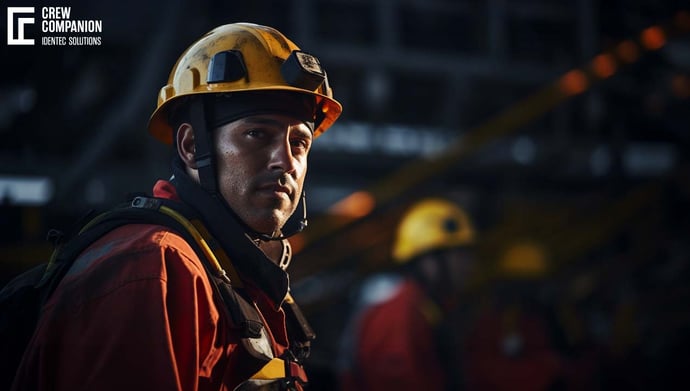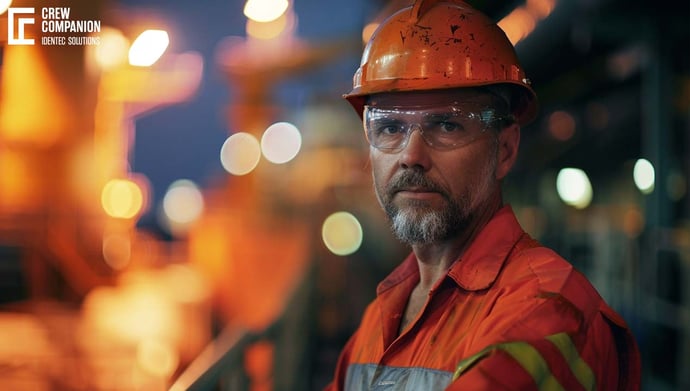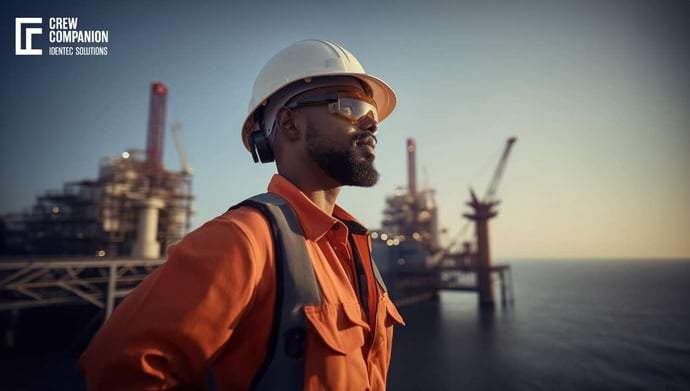Why Emergency Preparedness Is Important in Offshore Operations
| Written by Michal Wozniakowski-Zehenter
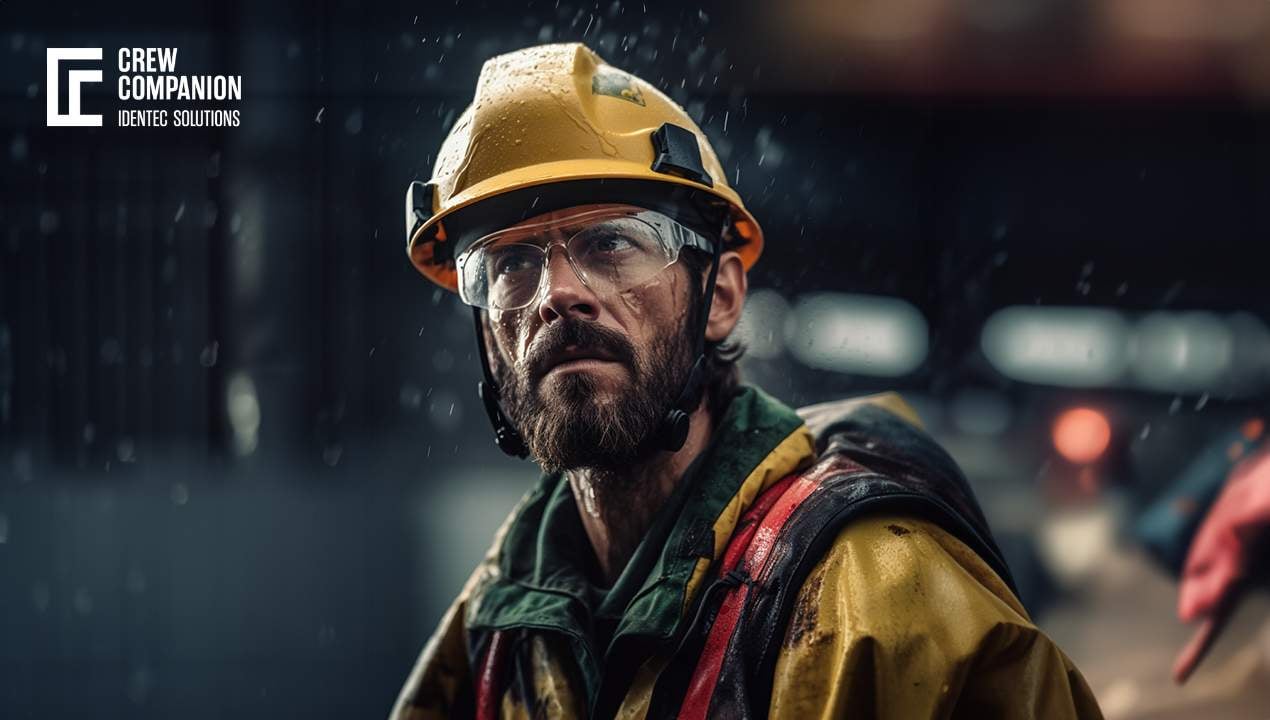
No video selected
Select a video type in the sidebar.
UNDERSTANDING EMERGENCY PREPAREDNESS
Emergency preparedness—what is it? Let’s start with a brief refresher. It involves the strategies and resources that organizations develop to manage crises effectively, including comprehensive response plans, regular practice drills, accessible emergency equipment, and trained personnel. The main purpose is to reduce the impact of emergencies, safeguard lives, and minimize environmental and property damage.
While complex and advanced, offshore platforms and drilling rigs present particularly high risks. Positioned far from the shore, these structures endure relentless natural forces such as hurricanes, high seas, and severe storms. Additionally, the extraction and processing of hydrocarbons require handling flammable and toxic substances under high pressure, heightening the potential for disastrous incidents. Consequently, the high complexity and risk of offshore operations make emergency preparedness crucial.
Jackie Savitz, Chief Policy Officer for Oceana, said: “Offshore drilling simply will never be safe. When there is a spill like Deepwater Horizon, it's too late, our options are severely limited, so prevention is the only solution and this is a good step in that direction. It is an inherently risky business, and it's not a matter of if, but when we will have another one.” (1)
CASE STUDIES IN PREPAREDNESS AND UNPREPAREDNESS
To answer the question - why emergency preparedness is important in offshore operations - it is useful to examine real-world scenarios where being ready has either mitigated disasters or where unpreparedness has led to severe consequences.
THE PIPER ALPHA DISASTER: A CASE OF UNPREPAREDNESS
One of the most tragic examples of things going wrong in offshore operations is the Piper Alpha disaster of 1988. Piper Alpha was an oil production platform in the North Sea operated by Occidental Petroleum. Around 10:00 pm on July 6, 1988, a series of unfortunate events started. Gas was reintroduced into pump A, causing a pressure build-up that the loosely fitted flange could not withstand. Gas leaked at high pressure, triggering alarms. Before action could be taken, the gas ignited and exploded. The ignition source remains unclear, but possibilities include hot work, hot surfaces, broken light fittings, or an electrostatic spark.
The platform was not designed to withstand explosions, so the blast destroyed the firewalls separating module C from modules B and D (which housed the control room). This destruction caused further fires and severely damaged the control room. Control room operator Geoff Bollands activated the rig's emergency stop button, shutting down oil and gas production. However, the gas pipelines to Tartan and Claymore could not be isolated due to separate push buttons not being activated. The control room was abandoned, and the platform's organization fell apart. The manual fire water system couldn't be activated, and the power failed, making electric fire pumps inoperable. No alarms warned workers of the disaster, as the announcement system was impaired. The heat from the flames ruptured crude oil pipes, causing a pool fire. The platform's floor allowed burning oil to form a dangerous puddle. Lead production operator Robert Vernon and safety officer Robert Carroll tried to manually start the diesel fire pumps but were never seen again. By 22:20, Tartan and Claymore's managers knew of the explosion but did not shut down production, awaiting orders. Meanwhile, 70 to 80 men were trapped in the canteen, with evacuation impossible due to smoke and fire. Piper's manager did not order an evacuation.
Around the same time, the heat from burning oil on the diving platform caused the Tartan pipeline to rupture, releasing large amounts of flammable gas, which ignited a massive fire. Crews on vessels up to a kilometre away felt the fire's heat and vibrations, making the platform's destruction inevitable. By 22:50, the MCP-01 pipeline failed, creating another huge jet fire with flames shooting 300 feet into the air. Survivors were either sheltering in smoke-filled accommodation or jumping into the North Sea. At 23:20, the Claymore gas line ruptured, adding more fuel to the fires. The Claymore manager had received orders to shut down production and was depressurizing the pipeline, but it was too late to prevent the rupture. Tartan's gas pipeline had been shut down around 22:30 and was being depressurized by 23:20. Around 23:45, the platform began collapsing due to the intense heat. First, a crane fell, then the drilling derrick. The generation and utilities module (D) and the accommodation block, still occupied, slid into the sea. By 00:45 on July 7, nearly all of Piper Alpha was destroyed, with only module A remaining.
Several factors contributed to the disaster, highlighting a severe lack of emergency preparedness. The platform’s safety systems were poorly designed and maintained. The crew had not been adequately trained for such emergencies, and there was a lack of effective communication and coordination among different teams on the platform. Emergency procedures were either not in place or not followed correctly.
The result was catastrophic: 167 out of 226 personnel on the platform lost their lives. The disaster also caused extensive environmental damage and financial losses estimated at $3.4 billion. The Piper Alpha disaster remains a stark reminder of the fatal consequences of inadequate emergency preparedness.
THE DEEPWATER HORIZON BLOWOUT: LESSONS IN PARTIAL PREPAREDNESS
The Deepwater Horizon oil spill in 2010 is another incident that underscores the importance of our topic. The drilling rig, operated by Transocean and owned by BP, experienced a blowout that led to a massive explosion, killing 11 workers and resulting in the largest marine oil spill in history.
In March 2010, the rig faced issues like drilling mud falling into the undersea oil formation, sudden gas releases, a pipe falling into the well, and the blowout preventer leaking fluid multiple times. The rig's mechanic mentioned that these problems had been ongoing for months, with the drill frequently kicking due to high gas pressure. On March 10, a BP executive informed the Minerals Management Service about a stuck pipe and well control problems, indicating BP would need to plug back the well. A confidential Transocean survey weeks before the explosion revealed workers' concerns about safety practices and fear of reporting mistakes due to potential reprisals. The survey noted poor equipment reliability and fake data entries to bypass the system, distorting the company's perception of safety.
The blowout preventer was damaged in an unreported accident in late March. Transocean claimed workers had no warning signs before the explosion. By April 20, the operation was five weeks behind schedule. A BP memo warned that the cementing of the casing might not be successful. Halliburton had finished cementing 20 hours before the blowout but hadn't set the final cement plug yet, using a difficult nitrogen-foamed cement. Patrick O'Bryan, BP's Vice President of drilling, was on the platform two hours before the explosion to celebrate seven years without a "lost-time incident." A BP official directed the crew to replace the drilling mud with lighter seawater despite the chief driller's protest. BP's internal investigation found serious warning signs before the blowout, including equipment readings showing gas bubbling into the well. The heavy drilling mud initially contained the gas. A House Energy and Commerce Committee statement in June 2010 indicated BP had chosen riskier procedures to save time or money, sometimes against staff or contractors' advice.
The fire on the Deepwater Horizon started at 9:56 p.m. CDT on April 20. Transocean employees reported flickering lights and two strong vibrations, with Jim Ingram noting, "on the second [thud], we knew something was wrong." Adrian Rose mentioned that abnormal pressure built up in the marine riser rapidly expanded and ignited. BP's internal investigation found that a methane gas bubble escaped from the well, shot up the drill column, and exploded after bursting through several seals. Survivors described a sudden explosion with less than five minutes to escape as alarms went off. The explosion led to a fire that engulfed the platform, and after burning for over a day, the Deepwater Horizon sank on April 22. The Coast Guard received word of the sinking at about 10:21 a.m. that day.
In this case, some elements of emergency preparedness were in place. The crew had undergone regular safety drills, and there were emergency response procedures and equipment onboard. However, the scale of the disaster revealed significant gaps. The blowout preventer, a critical piece of safety equipment, failed to function as designed. Additionally, the response to the spill was hampered by a lack of coordination and inadequate resources to contain the oil in a timely manner.
While some lives were saved due to the preparedness measures in place, the environmental and economic consequences were enormous, with extensive damage to marine and coastal ecosystems and a financial impact estimated at tens of billions of dollars. The Deepwater Horizon incident emphasizes that while preparedness can mitigate some effects, comprehensive and fully functional emergency systems are essential to handle large-scale disasters.

THE EKOFISK BRAVO BLOWOUT: A PREPAREDNESS SUCCESS STORY
On the other hand, the Ekofisk Bravo blowout in 1977 serves as a positive example of the importance of preparedness. On Friday, April 22, 1977, Ekofisk Bravo, an oil platform in the North Sea operated by Phillips Petroleum, experienced a blowout due to an incorrectly installed downhole safety valve. In terms of the volume of crude oil spilt, this was the largest offshore blowout worldwide at the time.
Despite the severity of the blowout, the emergency response was swift and effective. The platform's crew had been well-trained in emergency procedures, and regular drills ensured they were prepared for such an event. The immediate evacuation of personnel was carried out efficiently, and no lives were lost. A total of 112 people were on board when the accident occurred. It took 15 minutes from sounding the alarm until all of them had been evacuated. With an estimated 80,000–126,000 barrels (12,700–20,000 m³) spilt, it was the largest blowout in the North Sea. Red Adair and his crew helped cap the blowout.
Moreover, the preparedness measures extended beyond the platform. A comprehensive contingency plan was in place, involving the rapid deployment of firefighting and containment vessels. After a week, the blowout was brought under control, and the environmental impact was minimized.
The Ekofisk Bravo incident demonstrates how thorough emergency preparedness can prevent loss of life, improve rig safety and significantly reduce environmental and economic damage. The successful handling of this blowout highlights the effectiveness of well-planned and regularly practised emergency procedures.
What are the KEY ELEMENTS OF EFFECTIVE EMERGENCY PREPAREDNESS?
Effective emergency preparedness in offshore operations involves several key elements: risk assessment, emergency planning, training and drills, equipment and resources, communication, and coordination. Understanding the specific risks associated with offshore operations is the first step, which includes identifying potential hazards, evaluating their likelihood and impact, and developing strategies to mitigate them. Detailed emergency response plans must be developed, outlining procedures for various scenarios. These plans should be regularly reviewed and updated to incorporate new insights and technologies. Regular safety training offshore and emergency drills are essential to ensure that personnel are familiar with emergency procedures and can execute them effectively under stress. Drills should closely simulate real-world scenarios.
Having the right equipment and resources on hand is crucial. This includes firefighting systems, lifeboats, medical supplies, and communication tools, all of which should be regularly inspected and maintained. Effective communication is vital during an emergency, involving clear protocols for communication within the platform, with onshore support teams, and with external emergency services to ensure timely and accurate information flow. Coordination among various teams and agencies is essential for a cohesive response. This includes the platform crew, company management, emergency responders, and regulatory bodies. Joint exercises and collaborative planning can enhance this coordination.
THE BROADER IMPLICATIONS OF EMERGENCY PREPAREDNESS
Beyond the immediate safety of personnel and protection of assets, emergency preparedness has broader implications for offshore operations. It plays a critical role in environmental stewardship, regulatory compliance, and corporate reputation. Offshore operations have the potential to cause significant environmental damage, particularly in the case of oil spills. Effective emergency preparedness helps mitigate this risk of an offshore incident, protecting marine and coastal ecosystems, which is both an ethical responsibility and a regulatory requirement in many jurisdictions.
Regulatory bodies in many countries impose strict requirements for emergency preparedness in offshore operations. Compliance with these regulations is essential to maintain operational licenses and avoid legal penalties, as non-compliance can result in significant financial and reputational damage. The reputation of companies involved in offshore operations is closely tied to their safety and environmental performance. High-profile disasters can severely damage a company's reputation, leading to loss of business and investor confidence. Conversely, a strong track record in emergency preparedness can enhance a company's reputation, attracting investment and business opportunities.
What ROLE Plays TECHNOLOGY IN ENHANCING EMERGENCY PREPAREDNESS?
With progressive developments taking place to make offshore operations more complex and challenging, advanced technology is integrated to make emergency preparedness much better. Advanced technologies, such as AI, Data Analytics, and Real-time Monitoring Systems, are remoulding risk management and response coordination in offshore settings. AI can be used to forecast future risks by taking into account huge amounts of data. These forecasts, therefore, allow the corporation to act in advance against any potential accident before it happens. The real-time monitoring systems provide continuous streams of data about operation conditions: weather patterns, equipment status, and personnel location. These systems allow faster interventions because of the precise current information they provide, hence allowing timely action if there is an emergency.
Automation and robotics, including such means as drones or remotely operated vehicles, also play an increasingly important role in emergency situations. These can be used to conduct inspections in hazardous areas, make damage assessments, or assist in search and rescue without actually risking human lives. Improved communication technologies include satellite systems and cloud-based platforms, which ensure connectivity from locations that are very remote to onshore management and emergency services. Seamless communications are important in this respect for the good coordination required in such an emergency. Whereas these are technologies continuously in development, their role in enhancing offshore preparedness for emergencies and assuring effectiveness will be further extended by offering more reliable answers to risk mitigation and crisis management. On the other hand, companies will also be able to increase operational resilience besides improving their emergency.
THE FUTURE OF EMERGENCY PREPAREDNESS IN OFFSHORE OPERATIONS
The field of emergency preparedness is continually evolving, driven by technological advancements, regulatory changes, and lessons learned from past incidents. Future developments are likely to enhance the effectiveness of emergency response in offshore operations. Technology plays a crucial role in improving it. Advances in monitoring and detection systems can provide early warnings of potential hazards. Drones and remotely operated vehicles (ROVs) can assist in inspections and emergency response efforts. Enhanced communication systems can facilitate better coordination and information sharing.
Regulatory frameworks are evolving to incorporate new standards and best practices. Companies must stay abreast of these changes and ensure compliance to maintain their operational licenses and avoid legal penalties. Each incident provides valuable lessons that can inform future preparedness efforts. Continuous learning and improvement are essential to enhance the effectiveness of emergency response plans and procedures. Companies should regularly review and update their preparedness measures (like emergency mustering) based on insights gained from past incidents and industry developments.
FAQs
Why is emergency preparedness important?
Emergency preparedness is crucial for safeguarding lives, protecting assets, and ensuring the continuity of operations in the face of unexpected events. It helps mitigate risks associated with natural disasters, accidents, and other emergencies by enabling prompt and effective responses. Preparedness involves detailed planning, regular training, and coordination among various teams, ensuring that everyone knows their roles and responsibilities during an emergency (see also: Emergency response kit).
Beyond immediate safety, it also protects the environment from potential disasters, such as oil spills in offshore operations. Regulatory compliance is another critical aspect, as many jurisdictions mandate stringent preparedness measures. Failure to comply can result in legal penalties and operational shutdowns. Additionally, a company's reputation is significantly influenced by its ability to handle emergencies. Effective preparedness can enhance public and investor confidence, whereas poor handling of crises can lead to severe reputational damage, financial loss, and diminished business opportunities.
TAKEAWAY
Emergency preparedness is essential for offshore operations due to their complex and hazardous nature, as well as the remote environments they occur. Tragic events like the Piper Alpha disaster and the Deepwater Horizon blowout highlight the severe human, environmental, and financial consequences of inadequate preparedness. Conversely, successful responses, such as the Ekofisk Bravo blowout, show the life-saving and damage-limiting benefits of being well-prepared.
Effective emergency preparedness involves risk assessment, detailed planning, regular training and drills, adequate resources, and robust communication and coordination. It also plays a crucial role in environmental protection, regulatory compliance, and maintaining corporate reputation. As offshore operations evolve, so must the strategies and technologies for emergency preparedness. By focusing on continuous learning and improvement, companies can better protect their personnel, the environment, and their business interests during emergencies.
Delve deeper into one of our core topics: Emergency Response Management
Glossary
An offshore oil rig is a large, specialized structure used for the exploration, drilling, and production of oil and gas from beneath the seabed. These rigs are designed to operate in harsh marine environments and can be classified into fixed platforms, semi-submersibles, drillships, and jack-up rigs, depending on water depth and operational needs. Offshore oil rigs house drilling equipment, living quarters for crew members, and safety systems to handle high-pressure hydrocarbons. They are equipped with advanced technology for well control, blowout prevention, and emergency response. Strict safety regulations and environmental standards govern their operation to minimize risks such as oil spills, gas leaks, and fires. Offshore oil rigs play a crucial role in global energy production, particularly in deepwater and ultra-deepwater fields, where significant hydrocarbon reserves are located. Regular maintenance, inspection, and emergency preparedness are essential for safe and efficient offshore drilling operations. (4)
Sources:
(1) https://oeuk.org.uk/emergency-response/
(2) https://core.ac.uk/download/pdf/30921755.pdf
(3) https://www.osha.gov/emergency-preparedness
(4) https://www.grndrilling.com/post/what-is-an-oil-rig
Note: This article has been updated on the 6th of March 2025

Author
Michal Wozniakowski-Zehenter, Marketing Manager
Michal Wozniakowski-Zehenter is an experienced marketing and project management professional. He spent most of his career on projects with a strong focus on digital marketing and event management. He is a very active voice representing offshore and mining industries through social media channels. Michal writes mainly about offshore oil and gas, renewable energy, mining and tunnelling. Compiling and sharing the knowledge within industries is one of his goals.
Related Articles
Related Product
